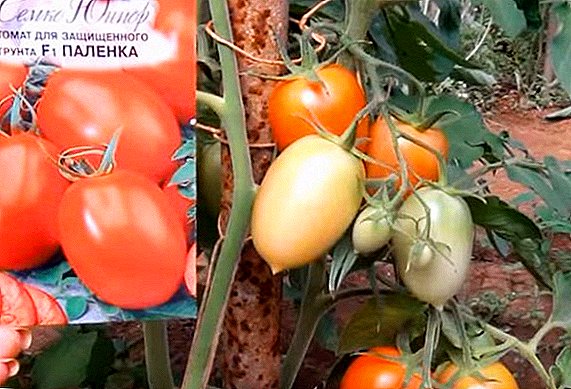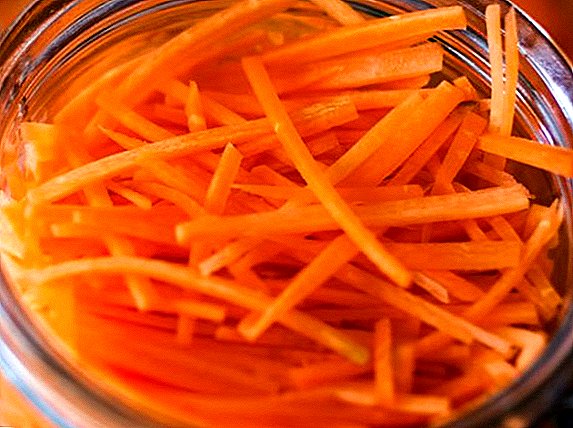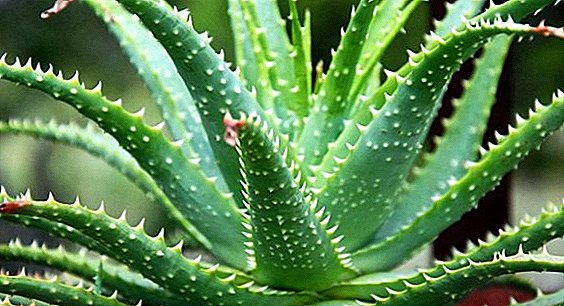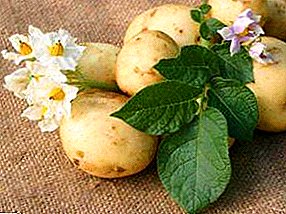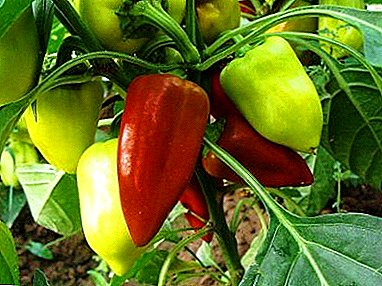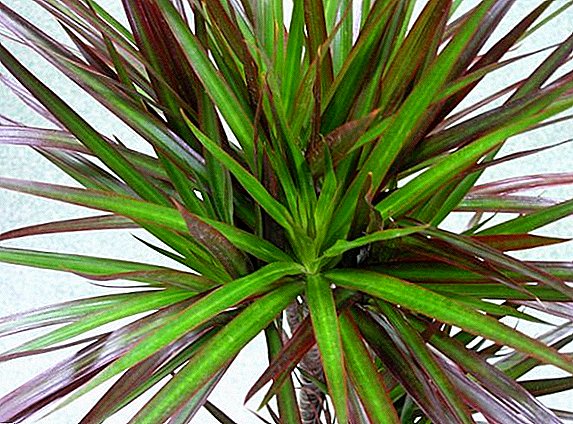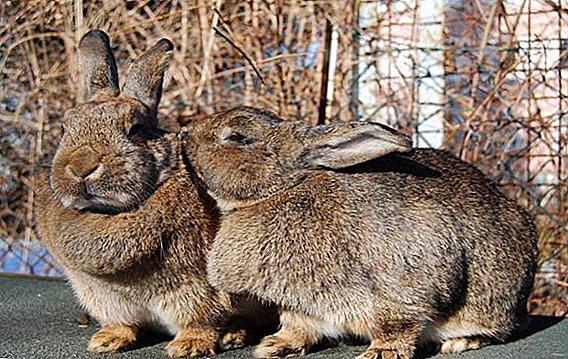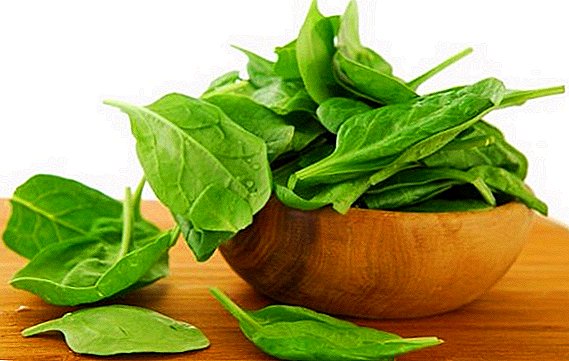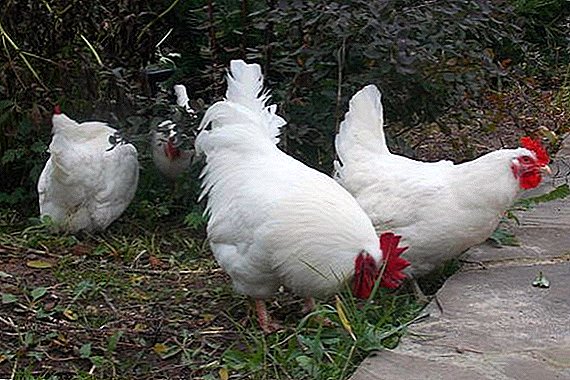 The majority of people living in villages and villages not only contain livestock, but also poultry. It is not always possible to create a large chicken farm, in this case you should pay attention to the mini-meat breeds of chickens. To breed and maintain such birds is quite simple and profitable from an economic point of view. In addition, such a bird is perfect summer residents.
The majority of people living in villages and villages not only contain livestock, but also poultry. It is not always possible to create a large chicken farm, in this case you should pay attention to the mini-meat breeds of chickens. To breed and maintain such birds is quite simple and profitable from an economic point of view. In addition, such a bird is perfect summer residents.
Origin
Mini-meat hens were bred as a result of breeding research conducted by the Zagorsk Poultry Institute, located in the city of Sergiev Posad, Moscow Region. When breeding the breed, Plymutrock, Leghorn, Rhode Island were involved as parents.
The breed immediately found its followers among the poultry farmers of the former USSR, and soon gained popularity in Europe. In some European countries, the breed has become so popular that it has actually replaced the local breeds of hens, traditional for these countries. This happened due to such qualities as excellent meatiness and egg production.
Did you know? In order for an egg to form in the chicken body, it takes about 24 hours.
Video: review of the mini-meat breed of chickens
Breed feature
Poultry farmers, both specialists and amateurs, have already made sure of the fact that it is more cost-effective to contain mini-meat breeds in comparison with the usual ones. One hen is enough about 125 g of feed daily.
Familiarize yourself with the best representatives of egg, meat, meat-egg, fighting and decorative breeds.
The appearance of the birds is similar to ordinary chickens, however, their short legs, as compared to traditional-sized chickens, are striking. They have high egg production, their meat has excellent taste. The body is compact, the plumage fits snugly to the body, the scallop is leaf-shaped.
Variety of chickens
There are several varieties of mini-meat breed, the most popular of which are P-11 and B-33. 
P-11
Dwarf Rhode Islands (P-11) have a small compact size, belong to the universal type, as they have good egg production and meat of excellent quality.
Such breeds of hens as the Ukrainian Ushanka, the Siberian Pedicar, the Polish Greenback, the Orlovskaya breed differ in good egg production.
Among the advantages are the following:
- compactness. The breed was bred for breeding in cages, an excellent option for a small-sized chicken coop;
- early begin to rush. Chickens bring the first eggs at the age of about six months;
- calm balanced character. Chickens are moderately active, do not cause much trouble. They love to dig in the ground, looking for chicken delicacies, roosters are usually not noisy, they also do not like to fight. A hen is not looking for the company of a person, but is not afraid of it;
- have good health. With proper feeding and care, both chicks and adults have a very high survival rate;
- high egg production. Depending on the feeding, they can produce up to 200 eggs per year.

Important! You should not save on warming the chicken coop for the maintenance of mini-meat breeds. Drafts, dampness and cold are the main enemies of dwarf chickens.
B-33
Dwarf Leghorny (B-33) have a rounded head of small size, the comb of the roosters is located vertically, the hens are lowered to the side. The body is wedge-shaped, the feather of white color fits tightly to the body.
The breeds of Brahma, Jersey giant, Kochinquin, Cornish, Orpington, as well as Hubbard crosses, master gray, and foxy chick are distinguished by high rates of meat productivity.
Such features are inherent in dwarf leggornas:
- calm, cockerels do not like to fight, hens rarely dig the ground;
- cockerels are characterized by increased sexual activity;
- they do not need a big house and a walking place, they get along quite normally in cages;
- eat an average of 1/3 less than their larger relatives.

Productivity
Mini meat chickens have the following characteristics:
- weight: chicken - 2.7 kg, rooster - 3 kg;
- egg production - up to 170 pieces per year;
- egg weight - 57-60 g;
- chick survival - over 97%, with proper care can reach 99%;
- hatchability - about 84%;
- adult bird survival is over 90%.
Did you know? The first domestic chickens appeared on the territory of modern Ethiopia at the turn of the I and II millennia BC.
Video: the difference between fawn and white chicken mini-meat breed
Hens content
If you decide to seriously engage in chickens mini-meat breed, follow these rules:
- First you need to prepare a warm chicken coop. You may have to warm its walls and floor.
- Attention should also be paid to hygiene requirements. Clean bird house is essential for maintaining immunity and good health of birds. In order for parasites and bacteria not to become a problem for you and your pets, it is necessary to regularly clean the hen house.
- Twice a year it is necessary to do a general cleaning of the room with the use of boiling water, potassium permanganate solution and laundry soap.
- Take care of proper flooring. It should keep warm and take away excess moisture. Sawdust or hay will do.
We recommend to read about how to build a pen for chickens, how to make a chicken coop from a greenhouse, how to build and equip a chicken coop, how to make it heating, ventilation and lighting, as well as how to make a roost, nest, drinking trough and automatic feeder for chickens.

Nutrition
Food must be balanced, include all the necessary components: fats, carbohydrates and proteins. Wrong food is reflected in egg production.
- For poultry, focused on meat production, well-fed food with the addition of cereals, herbs and minerals.
Read more about how to prepare feed for chickens and for adult birds with your own hands.
- Layers need vegetable proteins (sunflower seeds, peas).
- For the normal functioning of the digestive tract should be poured gravel in the trough.
- When feeding, follow the principle: it is better to not eat the bird than to eat. Overfed chickens rush badly.
- Experts recommend not crushing grain. Ground cereals “cement” the gastrointestinal tract, they are much more waste. In the evening, whole cereal grains are needed.
- During the year, you need to apply nutritional supplements that increase egg production.
- In the hen house you need to install the feeders and constantly monitor the availability of clean water.
- Birds should often be in the fresh air. The hen, digging in the ground, searches for the insects, worms and larvae it needs.

It is best to use industrial feed. The high productivity of large producers and their fairly affordable prices (both eggs and chicken meat) are explained by the use of such feeds for feeding. We must try to achieve maximum similarity of food prepared at home with factory-made feed.
Important! Wet food for feeding mini-meat chickens should be no more than 2/3 of the entire diet, the remaining third - cereals.
Homemade food for poultry should consist of three varieties:
- wet: a mixture based on potatoes (peel), with vegetables, roots and greens;
- dry: cereals with the addition of sand and chalk;
- mixed: a combination of the first two types of feed.
Learn how to give chickens bran and meat and bone meal, as well as how to germinate wheat for poultry.
Most often used dry feeding. For its preparation does not take much time, such food is well stored. The simplest recipe for preparing such food: mix in equal parts barley, oats, corn and millet. Add grated chalk. 
To prepare a wet type of food should be prepared:
- potato;
- pumpkin;
- beet;
- cabbage;
- zucchini and cucumbers.
Did you know? One of the most ancient and well-known logical riddles, the unequivocal answer to which has not yet been found: which is primary egg or chicken. Over this dilemma, Aristotle reasoned in 384 BC. er
Grind all ingredients with a chopper. Do small portions, as more than two days to store such salads can not. Also, do not put too much emphasis on wet food, it can cause disorder of the gastrointestinal tract. For winter nutrition should increase in the share of vitamins and minerals.
Video: feeding mini meat hens If you do not use ready-made mixtures of factory production, then you should prepare the components for winter feeding in the summer:
- Prepare potatoes and melons, they are stored for a long time. Fed in mixtures or simply in chopped form.
- Prepare hay from the summer. They need to line the bottom of the chicken coop periodically. Birds love to delve into it.
- Stock up on fine gravel, it contributes to the normal digestion of the bird.
Special attention should be paid to feeding the chickens. They need a balanced feeding from the very first days of life. Improper feeding can lead to deformation of the fingers in chicks after the first week of life.
It will be helpful for you to read about how to properly feed and grow chickens, what you can give to chickens, how to properly transport day-old chicks, as well as how to determine the sex of a chick.
This is explained by the fact that during selection a dwarf gene was used, the presence of which requires balanced feeding from an early age. 
Some rules for feeding young animals:
- Give chickens dairy products with greens.
- After the first month of life, enter feed and bone meal into the diet.
- After the chicken reaches five months of age, you need to start feeding him feed for adult birds.
Breeding
Mini-meat breeds are great for breeding in large farms, and for small poultry houses, for example, in the country. These birds are normally adapted to the conditions of existence in the cells. The factor of universality is also very important, especially for small poultry farming.
It is much more convenient to keep a bird with excellent egg production and, moreover, having high-quality dietary meat than to breed several breeds for different purposes: one for eggs, the other for meat.  At the same time there are attendant inconveniences: a bird of a different nature and temperament requires separate maintenance. Feed the birds also need to be separate, as the breeds of the egg type does not fit the broiler diet.
At the same time there are attendant inconveniences: a bird of a different nature and temperament requires separate maintenance. Feed the birds also need to be separate, as the breeds of the egg type does not fit the broiler diet.
Perhaps the main requirement in breeding such chickens is their thermophilicity. Newborn chickens are generally kept at +36 ° C and above for the first time, gradually lowering it as the chicks mature. Also, due to the characteristics of genetics, the purity of the breed should be respected.
Breeders do not recommend introducing "fresh blood" into the breed, this leads to a deterioration in the quality indicators of dwarf chickens and the manifestation of negative qualities (the breed becomes shallow, it doesn’t fit well, the eggs become small, and the birds themselves are painful).
Video: errors in the cultivation of mini meat hens
Advantages and disadvantages
A few words about the merits of dwarf chickens:
- mini chickens grow rapidly and gain weight;
- can be kept in a small space, including in cells;
- meat has excellent dietary characteristics;
- simplicity in feeding;
- low feed intake;
- undemanding in the content;
- carry rather large eggs;
- early egg production;
- balanced character, gets on well with almost any bird and animals.
Important! Chickens dwarf breeds need a balanced diet from the very first day of life, otherwise they may later have problems with limbs.

For a more objective review of this breed, you should also say a few words about the characteristic flaws:
- love heat and do not tolerate drafts;
- extremely demanding of cleanliness;
- because of short legs when walking in wet weather they stain the belly, so it is better to walk the birds when it’s dry outside;
- It is highly undesirable to mix with representatives of other breeds.
Summing up, we can say that mini-meat chickens are an excellent option for large farms that focus on commercial breeding of poultry, as well as for small poultry farmers who breed birds for their own consumption.
The mass of positive qualities of the breed absolutely outweighs minor flaws. And if you add to this versatility (good egg production and high quality dietary meat), then doubts about the feasibility of breeding mini-chickens disappear completely. 


